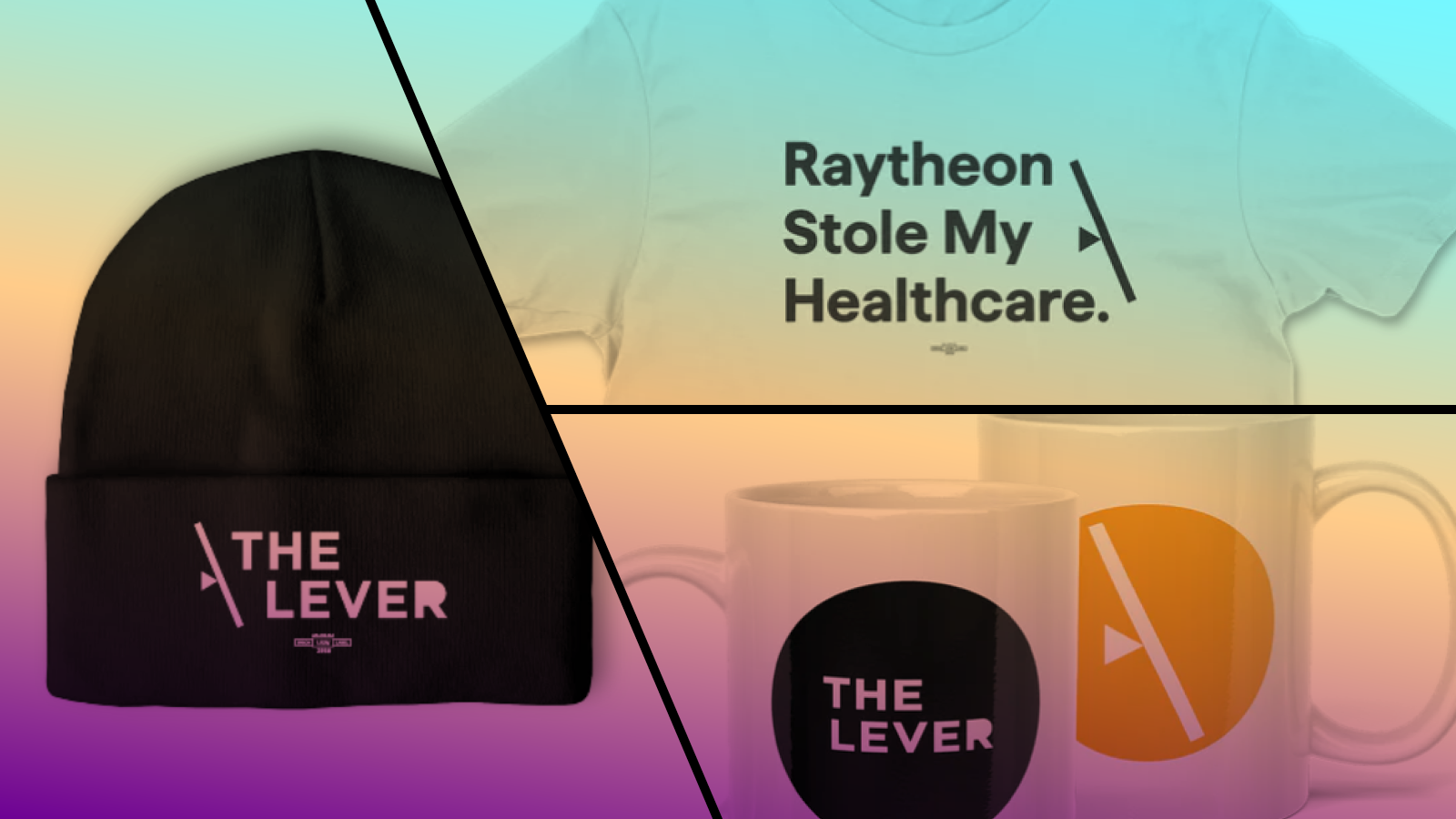As the government begins its first-ever price negotiations for a handful of medicines under Medicare, the pharmaceutical industry has launched an all-out legal and PR assault on this meager attempt to control out-of-control drug prices for the country’s most vulnerable. Big Pharma reasons that the government has no place setting prices for the drugs developed by private companies.
But the government, and by extension taxpayers, heavily subsidizes the development of drugs in this country. Now a bombshell new report reveals that Americans funded the development of all 10 drugs up for price negotiations, shelling out a total of $11.7 billion on their research. In 2022 alone, Big Pharma made $70 billion selling those same drugs — and now they want to keep their prices sky high.
According to the new study out of the Center for Integration of Science and Industry at Bentley University, which was published early March, the 10 selected prescription drugs received anywhere from $227 million to $6.5 billion in funding from the government’s National Institutes of Health (NIH) for crucial, foundational research.
“When the average taxpayer is paying for the drug, it’s not just what’s being paid at the pharmacy,” said Fred Ledley, professor of natural and applied sciences at Bentley and senior author on the study.

Merch That Holds Them Accountable
Check out The Lever’s merch. Every purchase supports holding the powerful accountable through the tireless independent journalism that corporate media will not do.
These drugs, which are covered by Medicare’s prescription drug benefit plan, are taken by 7.7 million enrollees, most of them elderly, to treat conditions including blood clots, heart failure, diabetes, autoimmune conditions, and chronic kidney disease. In 2022, Medicare patients spent $3.4 billion out of pocket on these medications, a number that increased by 116 percent over a four-year span.
From 2018 to 2022, out-of-pocket costs for Medicare enrollees climbed for nine of the 10 drugs. The average annual out-of-pocket cost for Stelara, an injectable drug that treats autoimmune conditions, rose the most from $709 per enrollee to $2,058. For non-Medicare U.S. patients, Stelara can be considerably more expensive, especially since drugmakers charge far higher prices in this country than they do elsewhere. A 2019 report found that the regular price for Stelara was $16,600 per dose in the United States, compared to $2,900 per dose in the United Kingdom.
According to the new report from Bentley University, the Johnson & Johnson subsidiary that developed Stelara received $6.5 billion in taxpayer funding for it — by far the most of any of the medicines up for price negotiations.
Total Medicare spending to pay for enrollees’ use of these vital drugs more than doubled from about $20 billion in 2018 to $50.5 billion in 2023. Paying for these particular drugs accounted for roughly 20 percent of all Medicare spending on prescription drugs between summer 2022 and spring 2023.
Pharmaceutical Research and Manufacturers of America (PhRMA), the pharmaceutical industry’s main lobbying group, said it could not comment on the specifics of a study it has not reviewed.
Sarah Ryan, PhRMA’s senior manager of public affairs, added in an email to The Lever that “while the NIH plays a crucial role in fostering basic research, private industry contributions, both financial and technical, are instrumental in turning discoveries into fully developed therapies for patients. There is a rich body of research documenting the nature of these complementary roles, which overwhelmingly demonstrates that the private sector invests significantly more and takes on far greater risk in drug development than the government.”
After finalizing negotiations with the drug manufacturers, the Centers for Medicare and Medicaid Services, which oversees all federal health programs, will publish the agreed-upon drug prices by Sept. 1, 2024, and the new prices will go into effect starting Jan. 1, 2026.
Essential Basic Research
The rising cost of prescription drugs is a critical issue in American health care. From 2008 to 2021, the launch prices of new drugs increased by 20 percent per year, forcing 18 million Americans to skip essential dosages, according to a 2021 Gallup survey of adults nationwide.
High prices are particularly harmful for lower-income households. Of survey respondents earning less than $48,000 per year, 18 percent reported they or someone in their home had skipped a dose to save money. More than five million Medicare beneficiaries struggle to afford their prescriptions, particularly those who do not receive a low-income subsidy that lowers out-of-pocket spending. Additionally, Black and Latino enrollees report affordability problems at 1.5 to 2 times the rate of their white counterparts.
In prior years, the federal government didn’t have the power to haggle with pharmaceutical manufacturers over Medicare drug prices. But that changed thanks to the Inflation Reduction Act, signed by President Joe Biden in 2022, which allowed Medicare drug-price negotiations and other pharmaceutical cost-cutting measures. The legislation has already capped out-of-pocket spending for insulin at $35 per month for Medicare beneficiaries. As Medicare expands its price negotiations to cover 80 drugs by 2030, the act is estimated to save the government $237 billion by 2031.
In the wake of the government announcing its starting-bid prices for the first 10 drugs up for negotiation, an analysis by the public policy advocacy group Center for American Progress concluded the process could cut the drugs’ prices by as much as $6,500 a month.
As pharmaceutical interests launched their offensive against these price negotiations, a report published by the United States Department of Health and Human Services last December found that of the 10 drugs selected, seven received at least one form of federal support as part of their research and development.
But the new report from the Center for Integration of Science and Industry goes further, finding that all 10 drugs received funding from the federal government. This is because while the government report only focused on money going towards applied research, meaning efforts to develop a particular drug, Ledley and his colleagues also looked at funding for basic science — the key, foundational research that identifies a biological target, like a protein or gene, that may be linked to a disease and is the first step in drug development.
“When most people look at what the government is paying for, they’re only looking at the applied science,” said Ledley.
Basic science is crucial in the development of transformative medicine, according to a 2018 study. Researchers examined 28 significant medicines approved by the U.S. Food and Drug Administration between 1985 and 2009 and found that 80 percent of them could be traced back to basic research that sought to understand a biological process or disease.
According to the Bentley University study, NIH funding on the 10 Medicare medications up for price negotiations ranged from $228 million to $6.5 billion per drug. Here’s the breakdown:
- Stelara, developed by Johnson & Johnson Innovative Medicine: $6.5 billion
- Enbrel, developed by Immunex Corporation: $2.6 billion
- Entresto, developed by Novartis: $901 million
- Eliquis, developed by Bristol-Myers Squibb and Pfizer: $791 million
- Xarelto, developed by Bayer and Johnson & Johnson Innovative Medicine: $764 million
- Imbruvica, developed by Johnson & Johnson Innovative Medicine and Pharmacyclics: $566 million
- Farxiga, developed by AstraZeneca and Bristol-Myers Squibb: $437 million
- Jardiance, developed by Boehringer Ingelheim and Eli Lilly and Company: $434 million
- Januvia, developed by Merck: $228 million

Hold Them Accountable With A Donation
Give a one-time donation in any amount to fund The Lever‘s mission to hold the powerful accountable through reader-supported investigative journalism. Every cent helps.
The specifics of government funding going towards foundational research for the final drug on the list — Novolog, which treats type 1 and type 2 diabetes — was not available because basic research on insulin occurred decades ago. The NIH did report spending $4.5 million on applied research for Novolog’s development.
While most of the government subsidies went to basic science behind these drugs, the NIH also spent more than $250 million on applied research for these medicines, amounting to about half of the total cost of bringing the drugs to market.
This public funding saved the drug industry billions in research and development costs. Now those drugs are making pharmaceutical companies billions. In 2022 alone, the medicines netted their manufacturers more than $70 billion in total revenue, according to a Lever analysis. And some of these drugs have been on the market for 25 years.
“What makes the greed of the pharmaceutical industry so reprehensible is the fact that the American people are paying twice for some of the most expensive prescription drugs on the market: First through their taxes and a second time at the pharmacy counter,” Sen. Bernie Sanders (Ind.-Vt.) told the U.S. Senate Committee on Health, Education, Labor & Pensions last year.
Ledley doesn’t agree with the “paying twice” idea, since he and colleagues estimate the pharmaceutical industry is covering the majority of costs during the applied research and development stage. However, when it comes to drug pricing, “we think you have to include this public funding for developing the drug in your equation,” Ledley said.




